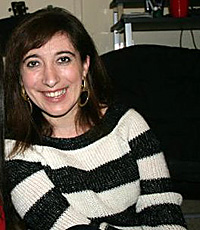By Gwen Davis, Special to JTNews
Jordan Magidson’s magic number was 77.
As associate director of education at the Institute of Southern Jewish Life in Jackson, Miss., Magidson’s job was to bridge the Jewish education curriculum across the 77 different Jewish communities in her coverage area. The idea was that kids would experience continuity when they went from one synagogue or Jewish camp to the next. The experience prepared Magidson for her role in the newly created Nadiv project.
The missions of the two programs are very similar, according to Magidson. Like her work at the ISJL, the Nadiv educator’s role bridges communities who often did not work together, allowing two separate organizations to be able to share resources and learn from each other.
Funded by the Jim Joseph Foundation and the AVI CHAI Foundation, and developed in partnership with the Union for Reform Judaism (URJ), Nadiv (which means “generous” or “noble”) created six experiential Jewish educator positions across the country to unite overnight Jewish camps and religious schools. It is now in its pilot run.
Magidson will toggle Jewish education in the Seattle area, working with URJ Camp Kalsman and Temple De Hirsch Sinai. She participated in Camp Kalsman this past summer, and will now work with Temple De Hirsch Sinai to unify the Jewish curriculum between the two institutions.
“We are taking the best of Jewish education from two different worlds and bringing them together, so our children are getting the best possible Jewish education and have fun while doing it,” she said. “We get them for such a short time — one week at camp and an hour a week at temple. We want to create great memories because the only way they’ll be engaged as adults is if we turn them into lifelong Jewish learners.”
After the school year is done, kids forget what they learned over the three-month summer break, according to Magidson. Having them do the same work they did in synagogue during camp will better reinforce their education.
Magidson also aims to enhance the education in general.
“I want to make sure kids are having fun in religion school, not just in camp,” she said. “To the point where they don’t even realize they are learning something but are living it — that’s the ultimate Jewish education.”
For Magidson, this job furthers her personal aspirations, as well.
“My goal is to always learn. I expect this position will make me look at Judaism in new ways and be the best I can at what I’m doing.”
The Temple De Hirsch Sinai community is excited about acquiring Nadiv.
“Jordan brings a unique set of skills to boost our program for 21st-century Jewish education, which means experiential education — the kind that has proven to be effective and engaging for kids,” said Rabbi Daniel Septimus, the temple’s director of education.
Septimus said the temple and the camp were both involved with hiring Magidson, using the large pool of candidates that Nadiv elicited on a national level.
Camp Kalsman was initially chosen to be one of the six partners in Nadiv. Camp director David Berkman chose to partner with Temple De Hirsch Sinai, as opposed to the other Reform congregations in the area.
Approximately 25 percent of camper enrollment at Camp Kalsman comes from Temple De Hirsch Sinai.
Nadiv receives most of its funding from the Jim Joseph Foundation, but is on a four-year phase-out track, so the cost burden will shift to the synagogues and camps. At the end of the four-year period, Nadiv will stand on its own financially.
“It’s an experiment on multiple levels,” said Josh Miller, senior program officer at the Jim Joseph Foundation. “It’s based on the premise that there will be collaboration between the camps and schools. The hope is that if we can get it started and document it goes well, other synagogues and camps will see it as an opportunity. Institutions and founders will want it to happen in their community.”
